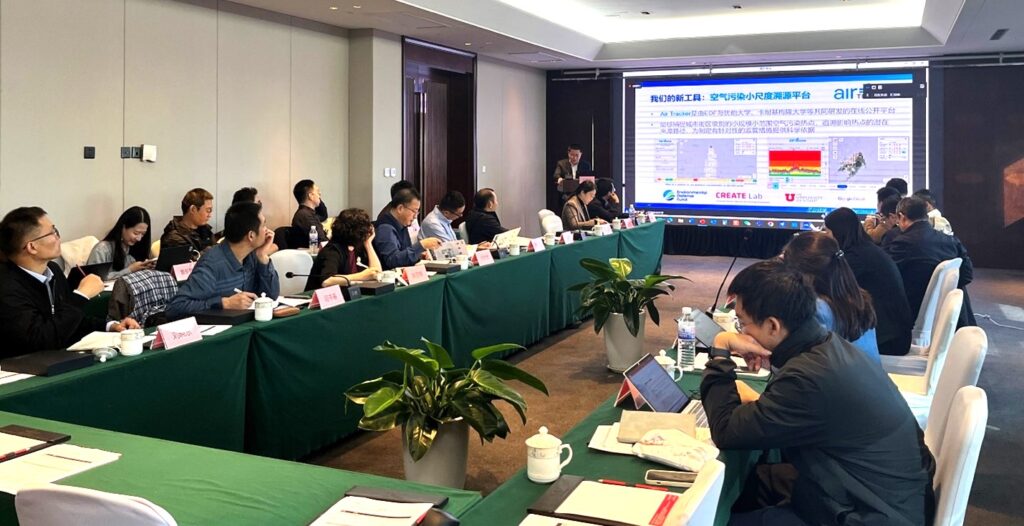
What’s new: EDF China recently unveiled its localized Air Tracker tool at a meeting with government officials and policy and academic experts in Jinan. The tool will help these and other policymakers to track and mitigate air pollution in support of China’s carbon peaking and carbon neutrality goals.
What is Air Tracker?: Air Tracker is an innovative air quality monitoring tool developed by EDF, the University of Utah and the CREATE Lab at Carnegie Mellon University that uses real-time, trusted scientific models to help users see where air pollution is coming from. The tool is currently operational in five U.S. cities, with plans to expand globally.
To adapt Air Tracker’s technology for use in China, EDF China collaborated with the Chinese Academy of Environmental Planning and Tsinghua University on joint research projects in Jinan, a city with more than 9 million residents. Jinan was an ideal location to deploy the technology in part because it has an urgent need to further reduce air pollution levels. Concentrations of fine particles (PM2.5), sometimes called soot, stood at 40 μg/m3 in Jinan in 2022. These exceed China’s national standards (35 μg/m3), which are 7 times weaker than the World Health Organization’s recommended limits (5 μg/m3).
What we know: Tsinghua University developed a monitoring approach that utilizes meteorological, emission and observational data from monitoring stations, which complements Air Tracker. By incorporating both approaches, the new, localized Air Tracker tool will pinpoint pollution sources and inform targeted control
Why it matters: This new tool allows users to quantify the contributions of different emission sources through near-real-time data collection. This will allow government officials to develop targeted control measures to reduce air pollution and carbon emissions.
Both China and the United States have committed to jointly addressing the climate crisis. The newly localized Air Tracker tool is an example of the ways the two countries plan to promote policies and technologies that control greenhouse gas emissions and air pollution.
Next steps: EDF China and our partners—including the Tsinghua University, Chinese Academy of Environmental Planning and Jinan Environmental Research Academy—will test the localized Air Tracker this winter in Jinan. The team also will seek input from key government partners who were present at the launch, including the Ministry of Ecology and Environment of China (MEE) and the Jinan Municipal Ecology and Economic Bureau.
The lessons learned from this pilot phase will provide valuable insights to other cities in the Global South who may also benefit from Air Tracker or similar technologies. The learnings will likely also inform future expansions of the tool to other cities in China and around the world.
Learn more about EDF’s Air Tracker tool at globalcleanair.org/AirTracker.
